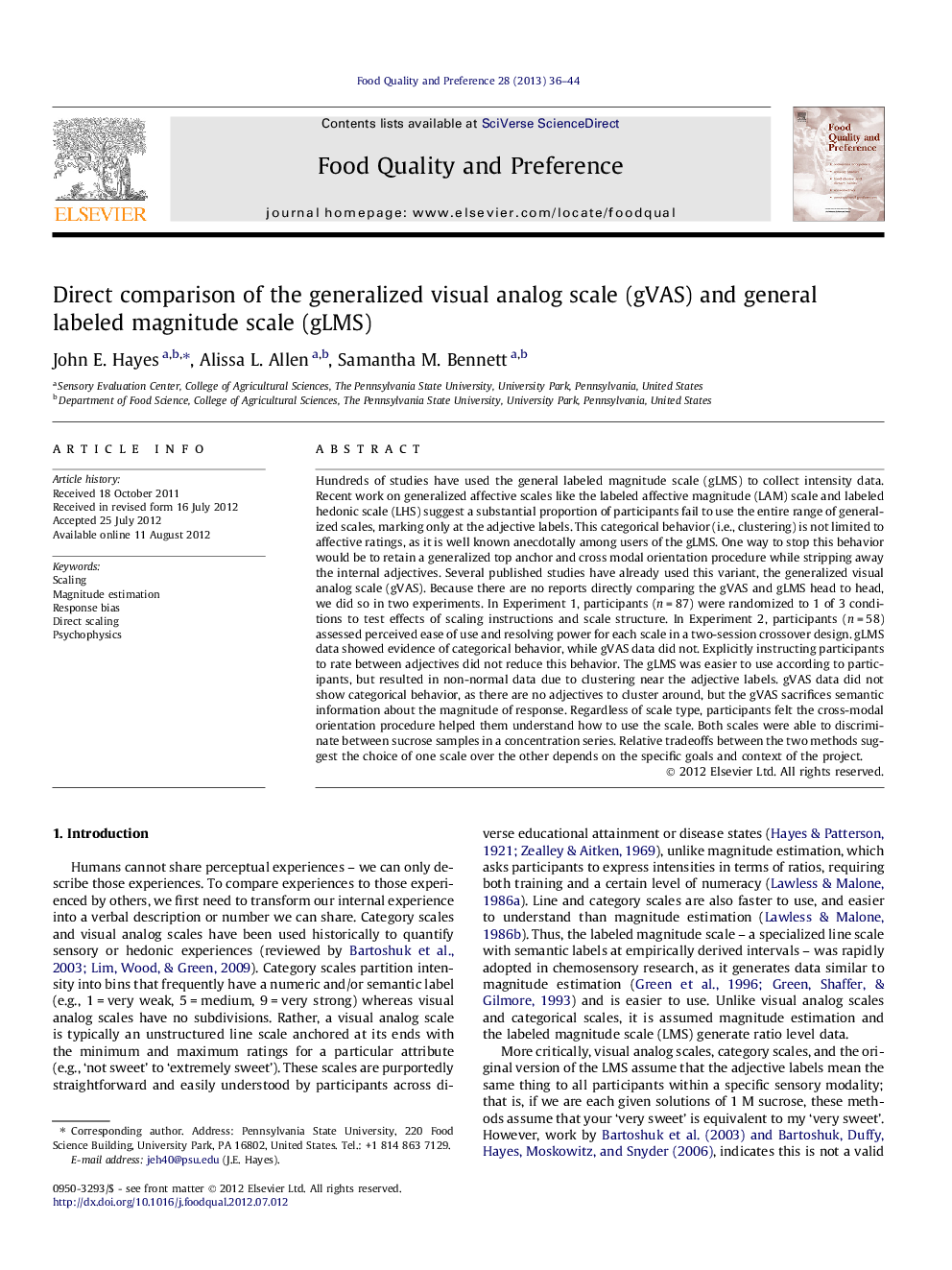| کد مقاله | کد نشریه | سال انتشار | مقاله انگلیسی | نسخه تمام متن |
|---|---|---|---|---|
| 4317352 | 1290591 | 2013 | 9 صفحه PDF | دانلود رایگان |

Hundreds of studies have used the general labeled magnitude scale (gLMS) to collect intensity data. Recent work on generalized affective scales like the labeled affective magnitude (LAM) scale and labeled hedonic scale (LHS) suggest a substantial proportion of participants fail to use the entire range of generalized scales, marking only at the adjective labels. This categorical behavior (i.e., clustering) is not limited to affective ratings, as it is well known anecdotally among users of the gLMS. One way to stop this behavior would be to retain a generalized top anchor and cross modal orientation procedure while stripping away the internal adjectives. Several published studies have already used this variant, the generalized visual analog scale (gVAS). Because there are no reports directly comparing the gVAS and gLMS head to head, we did so in two experiments. In Experiment 1, participants (n = 87) were randomized to 1 of 3 conditions to test effects of scaling instructions and scale structure. In Experiment 2, participants (n = 58) assessed perceived ease of use and resolving power for each scale in a two-session crossover design. gLMS data showed evidence of categorical behavior, while gVAS data did not. Explicitly instructing participants to rate between adjectives did not reduce this behavior. The gLMS was easier to use according to participants, but resulted in non-normal data due to clustering near the adjective labels. gVAS data did not show categorical behavior, as there are no adjectives to cluster around, but the gVAS sacrifices semantic information about the magnitude of response. Regardless of scale type, participants felt the cross-modal orientation procedure helped them understand how to use the scale. Both scales were able to discriminate between sucrose samples in a concentration series. Relative tradeoffs between the two methods suggest the choice of one scale over the other depends on the specific goals and context of the project.
► We document a categorical response bias in the commonly used gLMS.
► The unstructured gVAS does not show this bias, but it may have other flaws.
► Potential trade offs between the gVAS and gLMS are discussed.
Journal: Food Quality and Preference - Volume 28, Issue 1, April 2013, Pages 36–44